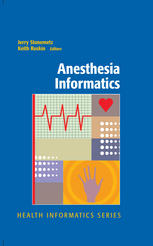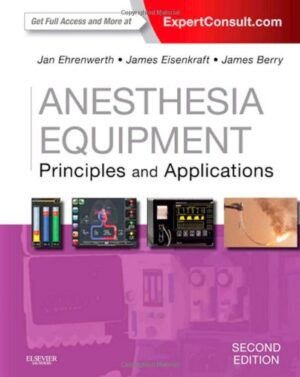Description
“Anesthesia Informatics” is a specialized field of healthcare informatics that focuses on the use of information technology and digital systems to enhance and streamline the practice of anesthesia. It encompasses the management of patient data, electronic health records, anesthesia-specific software, and the integration of technology into various aspects of anesthesia care. Here are some key points related to anesthesia informatics:
- Electronic Health Records (EHR):
- Anesthesia informatics involves the use of electronic health records to document and store patient information, including preoperative assessments, anesthetic plans, intraoperative monitoring data, and postoperative care.
- Digital Documentation:
- Anesthesia providers use digital tools to document patient information, monitor vital signs, record drug administration, and document anesthesia events in real-time.
- Data Integration:
- Anesthesia informatics systems often integrate with hospital-wide or healthcare facility-wide information systems to ensure seamless data exchange and accessibility.
- Decision Support Systems:
- Anesthesia informatics may include the use of decision support systems that offer guidance on drug dosing, anesthesia management, and patient care protocols.
- Medication Management:
- Informatics solutions are used to manage and track medications, helping to prevent errors related to drug administration.
- Monitoring Technology:
- The integration of advanced monitoring technology, such as anesthesia information management systems (AIMS), plays a significant role in collecting and interpreting data during anesthesia procedures.
- Patient Safety:
- Anesthesia informatics enhances patient safety by promoting standardized practices, minimizing human error, and facilitating real-time alerts and reminders.
- Quality Improvement:
- Data collected through informatics systems can be analyzed to identify areas for quality improvement in anesthesia practice.
- Research and Analytics:
- Informatics tools are used to collect and analyze data for research purposes, contributing to advancements in anesthesia care.
- Telemedicine:
- Telemedicine and remote monitoring technologies are increasingly integrated into anesthesia informatics, allowing for remote consultation and monitoring of patients.
- Regulatory Compliance:
- Adherence to regulatory requirements, including those related to data security and patient privacy (e.g., HIPAA), is a crucial aspect of anesthesia informatics.
- Education and Training:
- Anesthesia informatics is also used for training and education, providing simulation tools and virtual scenarios for anesthesia providers and students.
- Mobile Applications:
- Mobile applications and software designed for anesthesia providers are a part of the informatics landscape, allowing for mobile access to patient data and decision support.
Anesthesia informatics is a critical component of modern healthcare, enhancing the safety, efficiency, and quality of anesthesia care. It streamlines the management of patient data, provides tools for real-time decision support, and contributes to continuous quality improvement in the field of anesthesia. It’s an evolving field that leverages the power of technology to advance patient care and improve outcomes.





Reviews
There are no reviews yet.